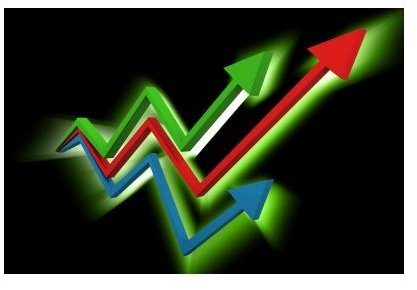Free Sample: Profit and Loss Statement
Why Use a Profit & Loss Statement?
It hard to even imagine that one wouldn’t want to utilize a profit and loss statement, especially to see how well a business is performing. While income statements can show net profits or losses, they often miss what you’ll find in the sample profit and loss statement found in our Media Gallery—percentages on performance.
If you offer more than one product or service, do you know which product is selling the most? Do you know the exact costs of goods sold for each product or service? Or, what is included in the cost of goods sold? All of these are reason enough to use a profit and loss statement, and they are also useful for product or service sales projections.
Image Credit (FreeDigitalPhotos)
Creating a Profit & Loss Statement

Once you’ve downloaded the sample profit and loss statement from our Media Gallery from the above link, it’s time to utilize some of your other financial reports to create your profit and loss report. Keep in mind that this sample P&L is also good for projecting if you are a new business or want to guesstimate how well a new product or service will perform.
The spreadsheet itself is very easy to use if you follow these steps:
- Revenues – Here the spreadsheet offers categories; however, you should replace the words “categories” with your actual products or services. You can obtain figures from your cash flow analysis or trial balance and enter the amounts for each category for a particular year. The annual percentages will automatically calculate for you. For example if you sell vacuum cleaners and vacuum cleaner accessories, you can break those up into different categories and list the amounts of each sold per category.
- Cost of Sales – Next you must determine the costs of sales for each category line item. You can obtain this through your trial balance or calculate the costs on your own. Remember that costs of goods sold include inventory, wages, payroll taxes, and labor for each line item. Take our vacuum cleaner example: If it costs you $100 to buy each vacuum cleaner and you pay $75 in wages, taxes, and labor, the per-cost for each vacuum would be $175. Again, this handy sample profit and loss statement calculates percentages per line item automatically.
- Expenses – In the sample profit and loss statement, you may have to add or delete rows depending on the amount of expenses for your business. There are pre-filled typical expenses you can use, however. It’s easy to obtain these numbers from your cash flow statement or income statement. Enter the expense amounts for each line item per month.
- Net Profit (or Loss) – Once you’ve entered revenues, cost of sales, and expenses, the spreadsheet will show you if you’ve made a profit or have a loss. If you are forecasting, this is a good tool to see where you may have more expenses than your gross profit (before expenses) can handle. If this is the case, you may have to evaluate the cost of your products or services, what you intend as far as pricing, and re-visit your expense accounts.
Image Credit (FreeDigitalPhotos)
Using the P&L as a Tool
Almost every business from time to time will need to obtain funding or, if they have a capital loan, will need to produce a profit and loss statement to banks, lenders, or investors. If you use this sample profit and loss statement to guide you, not only will you be able to see actual profits or losses but you can also make projections, something very essential especially for startup companies that need to write a business plan.
